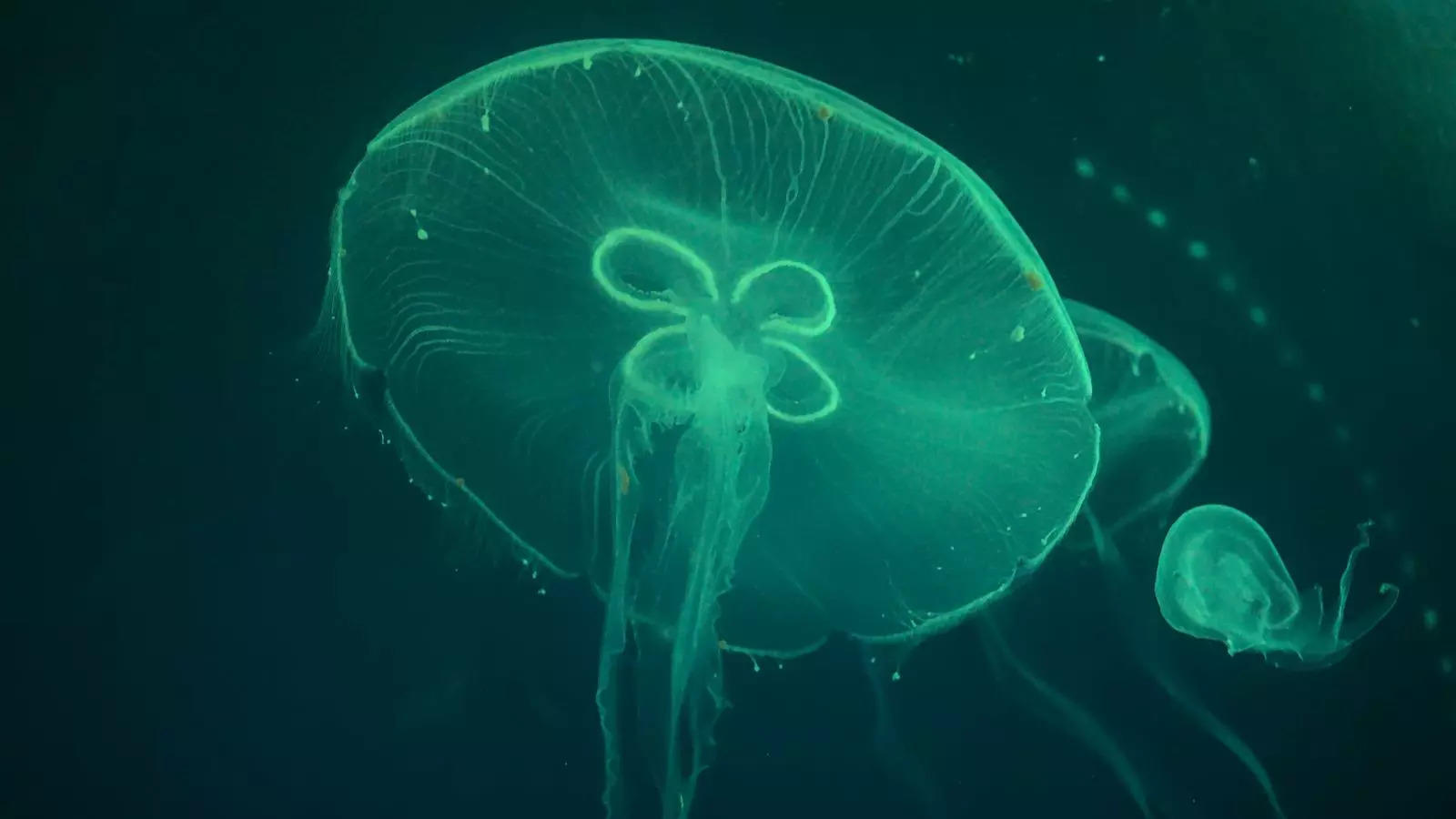
Unveiling Earth's Oldest Swimmers: The Ancient Jellyfish Species
In an astonishing discovery, researchers have unearthed the ancient remains of the world's oldest swimming jellyfish species in the renowned Burgess Shale formation in Canada. This extraordinary find has been named Burgessomedusa phasmiformis and offers a fascinating glimpse into the past. The fossilized creature boasts a bell-shaped body towering up to 20cm in height, adorned with around 90 short tentacles specially designed to ensnare substantial prey. The exceptional preservation of these specimens in the Burgess Shale provides invaluable insights into the evolution and behavior of these primordial sea dwellers.
This ancient jellyfish dates back to approximately 500 million years ago, predating the earliest human ancestors who emerged in Africa between five and seven million years ago.
Jellyfish, belonging to the medusozoans subgroup within the cnidaria phylum, have a remarkable composition with approximately 95 percent water. This high water content is a key factor contributing to the rarity of jellyfish fossilization after their death. Consequently, their evolutionary history has predominantly been investigated through the examination of microscopic fossilized larval stages and molecular studies conducted on extant jellyfish.
The fossils of jellyfish, which were unearthed during the late 1980s and early 1990s, have garnered considerable attention due to their remarkable nature. However, the process of formally describing these fossils posed a significant challenge for paleontologists and spanned several years. Finally, on August 1, the findings were officially published in the esteemed Proceedings of the Royal Society B.
Curator of invertebrate paleontology at the Royal Ontario Museum, Dr. Jean-Bernard Caron, was astonished by the discovery of delicate animals preserved in rock layers atop mountains. This remarkable finding contributes a new and significant lineage of animals to the Burgess Shale, offering valuable insights into the Earth's evolutionary history.
The revelation of Burgessomedusa phasmiformis provides valuable insights into the Cambrian food chain, revealing a more intricate ecosystem than previously known. The discovery confirms that these jellyfish were active swimmers during that era. In a significant find, 182 fossils of Burgessomedusa were unearthed in the Raymond Quarry in Canada. The reason behind their long-hidden state remains mysterious, leading to speculations that these jellyfish might have inhabited the upper regions of the water column, beyond the reach of mud flows that eventually buried the ancient seafloor communities.
Next Story
READ ON APP